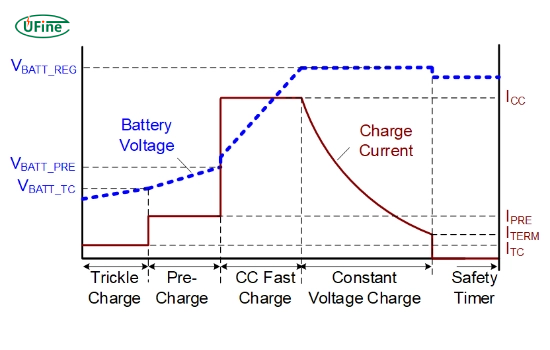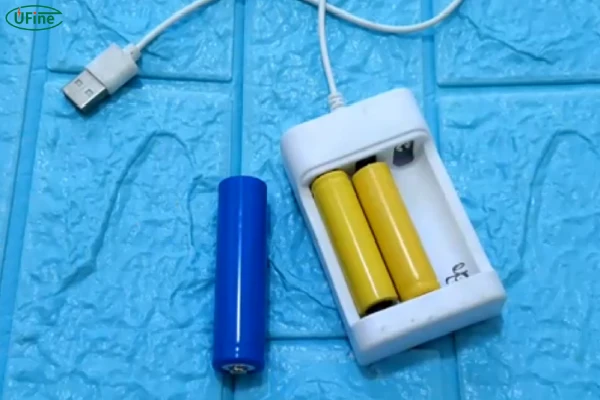
- Part 1. Understanding 18650 battery charging
- Part 2. What does the charging time of 18650 batteries depend on?
- Part 3. How long does it take to charge an 18650 battery? How to calculate
- Part 4. How to calculate the discharge time of 18650 battery?
- Part 5. Does the charger affect the charging time of 18650 batteries?
- Part 6. How to shorten the charging time of 18650 batteries?
- Part 7. Common faults and solutions for 18650 battery charging
- Part 8. Conclusion
18650 batteries are everywhere—from flashlights to vape devices and portable power tools. These versatile lithium-ion batteries are reliable and pack a punch, but they need proper care, especially when it comes to charging. One of the most common questions is, “How long does it take to charge an 18650 battery?”
The answer isn’t as simple as it might seem. Charging time depends on many factors, including the battery’s capacity, the charger’s output, and even the condition of the battery itself. In this detailed guide, we’ll explore not just the charging process, but also the factors influencing it, how to calculate it, and how to troubleshoot common charging problems.
Let’s jump in!
Part 1. Understanding 18650 battery charging

The first step in understanding charging time is knowing how 18650 batteries charge. The process is divided into four stages, each playing a crucial role in ensuring efficiency and safety:
Stage 1: Trickle Charging (Low-Voltage Pre-Charging)
When an 18650 battery is deeply discharged (voltage drops below 2.5–3.0V), the charger begins with a trickle charge. This is a low-current phase designed to gently bring the battery’s voltage up to a safe level.
- Why it’s important: Jumping straight into high-current charging when the voltage is low can damage the battery.
Stage 2: Constant Current (CC) Charging
Once the battery voltage reaches a safe range, the charger switches to constant current charging. In this phase:
- A steady current flows into the battery.
- The voltage gradually rises as the battery charges.
- Duration: This stage takes up the bulk of the charging time.
Stage 3: Constant Voltage (CV) Charging
As the battery approaches full capacity, the charger shifts to constant voltage mode. In this stage:
- The charger maintains a set voltage, usually around 4.2V.
- The current decreases gradually as the battery fills up.
- Purpose: This phase ensures the battery is safely topped off without overcharging.
Stage 4: Charging Termination
When the current drops to a very low level (typically less than 10% of the initial charging current), charging stops automatically. Some chargers use a timer or voltage cutoff as an added safety measure.
Part 2. What does the charging time of 18650 batteries depend on?
Charging time varies widely depending on several factors. Let’s look at the key elements that influence how long it takes:
1. Battery Capacity (mAh)
- A higher-capacity battery (e.g., 3000mAh) will take longer to charge than a lower-capacity one (e.g., 2000mAh).
- Why it matters: More capacity means more energy storage, requiring more time to fill.
2. Charger Output Current (A)
- Chargers with higher output currents charge batteries faster. For example, a 2A charger will charge an 18650 battery more quickly than a 1A charger.
- Tip: Using a charger with too low an output can unnecessarily lengthen charging time.
3. Initial Battery Voltage
- A deeply discharged battery (e.g., below 3.0V) will take longer because it first requires trickle charging.
4. Charging Efficiency
- Not all the energy from the charger gets stored in the battery. Some is lost as heat. The efficiency factor is usually 80–90%.
5. Temperature
- Charging in extreme heat or cold slows down the process and may even damage the battery. Always charge in a cool, dry place.
6. Battery Condition
- A new battery charges faster and holds more energy. Aging batteries, or those with degraded internal components, take longer and may not reach full capacity.
Part 3. How long does it take to charge an 18650 battery? How to calculate
Typically, it takes 2 to 4 hours to charge an 18650 battery. However, you can calculate the time more precisely using this formula:
Example Calculation
- Battery capacity: 3000mAh
- Charger output: 1000mA (1A)
- Efficiency factor: 1.3
Using a 2A charger would cut the charging time roughly in half.
Part 4. How to calculate the discharge time of 18650 battery?
To estimate how long your battery will last before needing a recharge, use this formula:
Example Calculation
- Battery capacity: 3000mAh
- Device draw: 500mA
Keep in mind, real-world factors like efficiency and battery condition may slightly reduce the actual runtime.

Keep in mind, real-world factors like efficiency and battery condition may slightly reduce the actual runtime.
Part 5. Does the charger affect the charging time of 18650 batteries?
Absolutely. The charger plays a significant role. Here’s how:
1. Output Current
A higher output charger (e.g., 2A) charges batteries faster than a lower output charger (e.g., 0.5A).
2. Smart Chargers
These are designed specifically for lithium-ion batteries. They adjust current and voltage automatically, ensuring safe and efficient charging.
3. Compatibility
Using a charger not designed for 18650 batteries can lead to slower charging, reduced battery life, or even safety risks like overheating.
Part 6. How to shorten the charging time of 18650 batteries?
Want to speed up the charging process? Here are some practical tips:
- Use a Quality Charger: Opt for a charger with a higher output (but within safe limits).
- Avoid Deep Discharges: Recharge the battery before it’s completely drained.
- Charge at Optimal Temperatures: Keep the battery and charger in a cool, ventilated space.
- Keep Contacts Clean: Dirty or corroded contacts can slow charging.
Part 7. Common faults and solutions for 18650 battery charging
Even with the best care, issues can arise. Here are some common problems and how to address them:
Problem 1: Battery Doesn’t Charge
- Possible Causes: Damaged battery, faulty charger, or dirty contacts.
- Solution: Test the battery with a multimeter. Try a different charger. Clean the contacts.
Problem 2: Overheating While Charging
- Possible Causes: High charging current or poor ventilation.
- Solution: Use a lower-output charger. Ensure good airflow around the charger and battery.
Problem 3: Incomplete Charging
- Possible Causes: Aging battery or malfunctioning charger.
- Solution: Replace the battery if it’s old. Test the charger with a different battery.
Problem 4: Slow Charging
- Possible Causes: Low-output charger or degraded battery.
- Solution: Upgrade to a higher-output charger. Replace the battery if it’s no longer holding charge efficiently.
Part 8. Conclusion
Charging an 18650 battery might seem straightforward, but several factors influence how long it takes. From understanding the charging process to calculating time and troubleshooting common issues, this guide covers it all. By following best practices, you can keep your batteries in great condition, save time, and ensure safety.
Remember, well-maintained batteries lead to longer runtimes and better device performance!
Related Tags:
More Articles

Battery Load Test: A Comprehensive Guide
Step-by-step battery load test guide for car, solar & industrial use. Learn how to load test a battery, interpret voltage charts, and avoid common mistakes.
The Comprehensive Guide to Battery Balancing and Battery Balancer
Discover how battery balancers improve lithium battery performance, lifespan, and safety. Learn types, functions, and tips to choose the right balancer.
What Is the Best Voltage for a Chainsaw Battery?
Compare 12V-80V chainsaw batteries for light pruning, medium firewood, and professional cutting. See best battery chainsaw with runtime charts and safety tips.
Lithium VS. Alkaline Batteries: A Comprehensive Comparison
Lithium batteries last 3–7× longer than alkaline and perform better in cold weather. Compare lifespan, cost, safety, and best uses to choose the right battery.
Comparing Lithium-Sulfur and Lithium-Ion Batteries: Which is Right for You?
Compare lithium-sulfur (Li-S) and lithium-ion batteries on energy, lifespan, cost, safety, and applications. Best choice for drones, EVs, and electronics.






